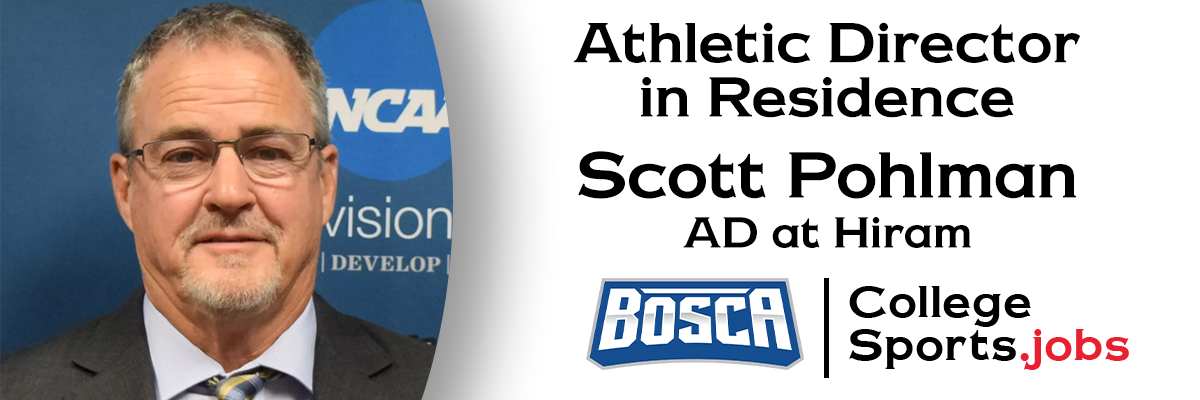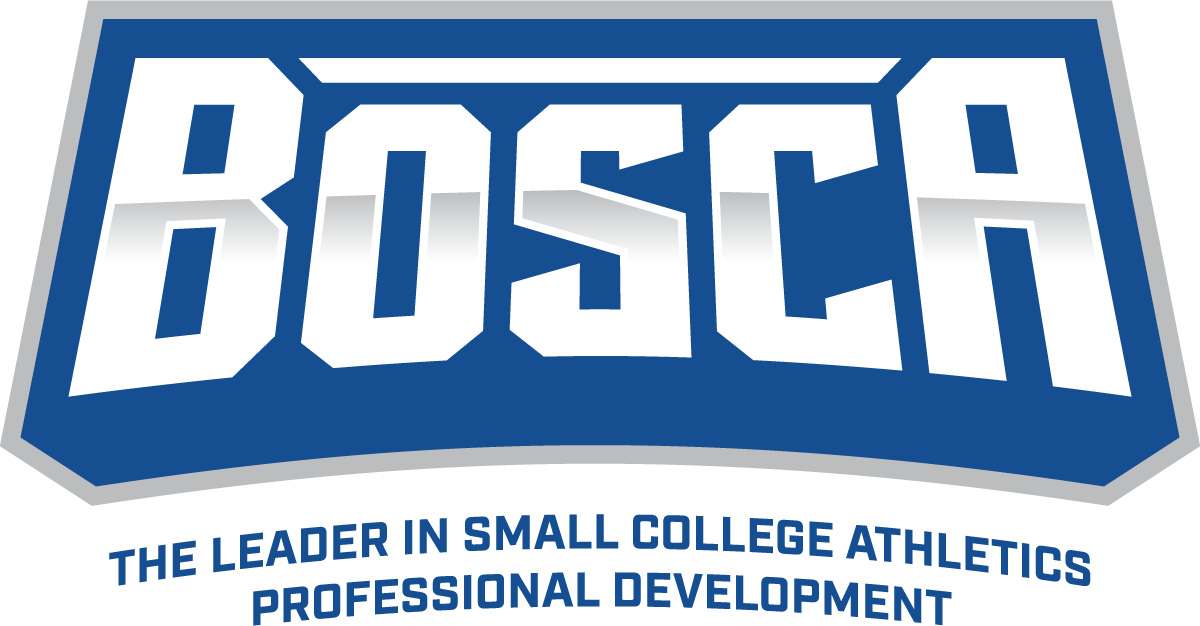AD in Residence: Hiram AD Scott Pohlman
Hiram AD Scott Pohlman dives into the Terriers' decision to change conferences, sport sponsorship, head coach hiring and evaluations, advice for ADs and more.

Hiram is heading back to the PAC after more than 3 decades. Why was now the right time to make this move? What was the criteria that led you to this decision?
The landscape of collegiate athletics is changing and evolving. If you look at Dl, Dll, and Dlll, conferences across the country are realigning. Some of the change is due to economic reasons and some for a more competitive balance. When we evaluated the move from the NCAC to the PAC, three factors came into play: missed class time, economics, and competitive balance. Looking at football as an example, the PAC has devised a north and a south division. Our furthest north division games will be one hour and ten minutes from campus. In the NCAC, our furthest in-conference game is six hours from Hiram. The furthest PAC conference game is only two hours and fifteen minutes from campus. Not only have we drastically reduced travel costs, but we will not have any games that require our teams to have overnight stays. The move to the PAC also comes with a competitive balance for our teams. Member institutions in the PAC are more demographically aligned with Hiram College.
You will be adding men’s ice hockey, women’s lacrosse and women’s bowling starting in the 2025-26 season. How do you decide what sports to add? Bigger picture, how involved is campus when adding sports or discussing roster sizes given the impact athletics has on enrollment?
At Hiram College, we have a process in place when adding new athletic teams and evaluating current athletic teams.
When adding a new sport, we first look at the demographics associated with the sport. (Is the sport popular in our geographic area and does the typical student athlete in that sport compare with the demographics of our campus?) If the answer is yes, a proposal is drafted. We look at the probability of being able to successfully recruit for that sport; we look at coaches' salaries; we look at the overall operating budget for that sport for a three-year period; and we look to see if the sport is sustainable economically over a three-year period. During this phase, we also look at the strain the proposed sport will add to our athletic facilities, which include locker room space and practice times. We also look at the strain placed on our athletic training staff.
If the proposed sport is not economically sustainable, we will not add the sport. If the answer is yes, the proposal is sent to a committee. The committee is made up of a cross-section of campus. The committee reviews the proposal, asks questions and then a vote is taken. If approved, we usually hire a new coach and allow them to recruit for a year prior to playing our first games. During the interview process, we lay out all the expectations for the program, which include roster sizes and budget. It should be noted that at the end of each year, we sit down with each coach and establish recruiting goals for the upcoming year. If a team consistently falls below recruiting goals and ends up costing the college more to support them financially than they bring in, we will evaluate the program.
Hiram will be the only Division III men’s ice hockey team in the state of Ohio. How much leverage do you think that will give you?
We believe that it will play a significant role in our ability to recruit student athletes for our hockey team. There are a number of club hockey teams in Ohio at the Dl, Dll, and Dlll level, but as stated in your question, no Dlll institution in Ohio, other than Hiram, is associated with the NCAA. We feel that being a student-athlete at the collegiate level plays a role in future success when placed on a graduating senior's resume.
You were the Terriers softball coach prior to being elevated. As a former coach, what are some criteria you use in determining hiring coaches? What are things that are easy to miss in the hiring process?
As stated in a previous answer, we spend a great deal of time talking to coaching candidates and outlining all expectations during the interview process. This allows candidates the opportunity to ask pointed questions and allows both us and the candidate the opportunity to see if it would be a good fit. We talk to candidates at length about our four pillars of winning: 1). Winning on the field, court or pool; 2). Winning at recruiting – both the quality of the recruitable athlete and the number of expected recruits to bring in; 3). Winning at team retention rate; and 4). Winning in our graduation rates. We look for coaches who have made a difference in the programs they are coming from. Even if they come from a losing program, we look to see if they made positive strides during the time they were at their institutions. Wins and losses do not always translate to a good coach. One of the most important factors is hiring a coach who understands what Dlll stands for. The candidate has to understand that the student-athlete is a student first and then an athlete. In my opinion, a coach and student-athletes can be successful in both.
One of the hardest things to judge, and sometimes miss, is team chemistry and their interaction with the members of their teams. For me, a good indication of a successful coach is how well the coach knows their players and how well the players know the coach.
What are some areas you are looking to grow revenue?
We do not focus on any one area of revenue. All streams of revenue are equally important. In Dlll, you cannot solely rely on revenue from ticket sales; crowds are often small. Putting winning teams on the field or court will increase revenue a little, but in my experience, not significantly. As stated in an earlier question, we also evaluate each program. We evaluate each team as a source of revenue for the college. We also look at advertising, concessions, and individual team fundraising as additional sources of revenue.
What are two to three key pieces of advice you would give someone who aspires to become an athletic director?
It’s your department. Your employer is paying you to do a job. Before accepting the position, know and understand the expectations. Trust your instincts and don’t be afraid to take risks. Everyone can point out problems within an organization. Before discussing problems, look at the problems from all angles to see what the true nature of the problem is. Once identified, offer several different solutions to the problems. Most importantly, be honest with your employees. In my opinion, supervisors are sometimes too worried about hurting employees' feelings. It has been my experience that employees, more times than not, desire true and honest feedback.

